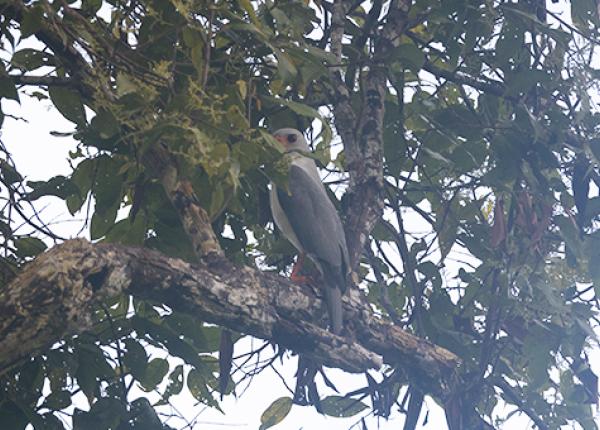How The Peregrine Fund is Helping
Though The Peregrine Fund doesn't work directly with Gray-headed Goshawks, our efforts in scientific research, habitat conservation, education, and community development help conserve birds of prey around the world. We also supply literature to researchers from our avian research library, which helps scientists around the world gather and share important information on raptor conservation. We also run the Global Raptor Impact Network which gives raptor researchers tools to more efficiently conduct their own studies while contributing to a global program. GRIN also provides citizen scientists a way to participate in raptor science and conservation.
Where it Lives
The Gray-headed Goshawk is found in parts of Australasia from Western Papuan islands and Aru Islands through New Guinea to the D'Entrecasteaux Archipelago (Ferguson Island) and Louisiade Archipelago. It makes its home in gallery forest, secondary growth, forest edges, and partly cleared areas.
Why it Needs our Help
Thankfully, although this raptor has a limited range, it is apparently common throughout, which is good news for the species. It is categorized as a species of "Least Concern" however, very little is known about its biology and there is a lot we still need to learn.
What it Eats
The Gray-headed Goshawk feeds on insects and small reptiles, particulary lizards. Because this species isn't often seen, very little is known about their hunting and feeding habits.
Nests, Eggs, and Young
This beautiful bird of prey tends to nest in tall trees. They construct their nest using sticks and leaves, and is often placed in the main fork of a tree. Very little is known about the breeding biology of this species and one observed nest contained a single egg, which was white and heavily marked with buff and olive blotches. This is all of the information we have.
Gray-headed Goshawk and the World Center for Birds of Prey
The World Center for Birds of Prey offers fun ways to learn about birds of prey. Interactive activities, tours, interesting videos and a children's room with activities from coloring sheets to quizzes to costumes are all available for our guests. We also have knowledgeable, on-site staff to answer any questions you may have. Though we don't have any goshawks on our Avian Ambassador team, the Northern Goshawk can be found in Idaho year-round. They nest in large trees within the Sawtooth National Forest located only a few hours away from The Peregrine Fund's World Center for Birds of Prey.
References:
Debus, S. and G. M. Kirwan (2020). Gray-headed Goshawk (Accipiter poliocephalus), version 1.0. In Birds of the World (J. del Hoyo, A. Elliott, J. Sargatal, D. A. Christie, and E. de Juana, Editors). Cornell Lab of Ornithology, Ithaca, NY, USA. https://doi.org/10.2173/bow.gyhgos1.01
Global Raptor Information Network. 2023. Species account: Grey-headed Goshawk Accipiter poliocephalus. Downloaded from http://www.globalraptors.org on 15 Dec. 2023









